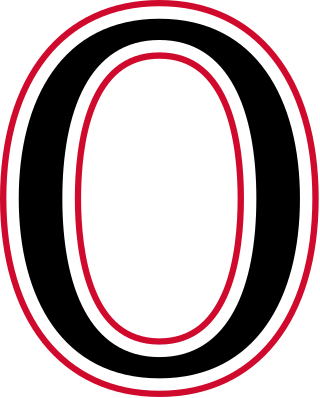
The Montreal Maroons were a professional ice hockey team in the National Hockey League (NHL). They played in the NHL from 1924 to 1938, winning the Stanley Cup in 1926 and 1935. They were the last non-Original Six team to win the Stanley Cup until the Philadelphia Flyers in 1974.

Sidney Gerald Abel was a Canadian Hall of Fame hockey player, coach and general manager in the National Hockey League, most notably for the Detroit Red Wings, and was a member of Stanley Cup-winning teams in 1943, 1950, and 1952. In 2017, Abel was named one of the "100 Greatest NHL Players" in history.

Joseph Sylvio Theobald Mantha was a Canadian professional ice hockey defenceman who played fourteen seasons in the National Hockey League for the Montreal Canadiens and Boston Bruins. Elected to the Hockey Hall of Fame in 1960, he was regarded as one of the best two-way defencemen of his day.

Aubrey Victor "Dit" Clapper was a Canadian professional ice hockey player. Clapper played his entire professional career for the Boston Bruins of the National Hockey League (NHL). He was inducted into the Hall of Fame in 1947, the first Honoured Member to be living at the time of his induction.
The 1924–25 NHL season was the eighth season of the National Hockey League. The NHL added two teams this season, a second team in Montreal, the Montreal Maroons and the first U.S. team, the Boston Bruins. Six teams each played 30 games.

Clinton Stevenson "Praying Benny" Benedict was a Canadian professional lacrosse goalie, ice hockey goaltender who played for the Ottawa Senators and the Montreal Maroons. He played on four Stanley Cup-winning squads. He was the first goaltender in the National Hockey League (NHL) to wear a face mask. He led league goaltenders in shutouts seven times over his professional career. He is a member of the Hockey Hall of Fame.

William Mailes "Cowboy" Cowley was a Canadian professional ice hockey centre who played 13 seasons in the National Hockey League for the St. Louis Eagles and Boston Bruins. Described as the Wayne Gretzky of his era, Cowley twice won the Hart Memorial Trophy as the NHL's MVP, and is widely regarded as one of the best playmakers in hockey history.
The 1927–28 NHL season was the 11th season of the National Hockey League. Ten teams played 44 games each. This was the first full season that the Toronto club used the Toronto Maple Leafs name following ownership changes in February 1927. The New York Rangers won the Stanley Cup beating the Montreal Maroons, becoming the first NHL team based in the United States to win it.

The Ottawa Senators were an ice hockey team based in Ottawa, which existed from 1883 to 1954. The club was the first hockey club in Ontario, a founding member of the National Hockey League (NHL) and played in the NHL from 1917 until 1934. The club, which was officially the Ottawa Hockey Club, was known by several nicknames, including the Generals in the 1890s, the Silver Seven from 1903 to 1907 and the Senators dating from 1908.

Charles Robert Gardiner was a Scottish-born Canadian professional ice hockey goaltender who played for the Chicago Black Hawks in the National Hockey League. Born in Edinburgh, Scotland, Gardiner moved with his family to Canada as a child. Playing all of his junior hockey in or around Winnipeg, Manitoba, Gardiner joined the Black Hawks in 1927. He played seven seasons with Chicago, winning two Vezina Trophies for allowing the fewest goals, was named to the First All-Star Team three times and Second All-Star Team once in recognition as one of the best goalies in the league. In 1934, Gardiner became the only NHL goaltender to captain his team to a Stanley Cup win. A few months after winning the Cup, Gardiner died from a brain hemorrhage brought on by a tonsillar infection. When the Hockey Hall of Fame was established in 1945, Gardiner was named one of the inaugural inductees.
William Stanley Beveridge was a Canadian ice hockey goaltender who played nine seasons in the National Hockey League (NHL) for the Detroit Cougars, Ottawa Senators, St. Louis Eagles, Montreal Maroons and New York Rangers.

Frederick Lionel Hitchman was a Canadian professional ice hockey defenceman who played twelve seasons in the National Hockey League for the Ottawa Senators and Boston Bruins.
The 1924–25 Ottawa Senators season was the club's 40th season of play and eighth season in the National Hockey League (NHL). Ottawa would finish in fourth place in the league, failing to make the playoffs for the first time since the 1917–18 NHL season, ending a streak of six straight seasons.
The 1925–26 Ottawa Senators season was the club's 41st season of play and ninth season in the NHL. The Senators placed first during the regular season but were upset in the playoffs by the Montreal Maroons.
The 1926–27 Ottawa Senators season was the club's tenth season of play in the NHL, 42nd overall. The Senators won the Stanley Cup for the fourth time in seven years, and eleventh overall including the pre-NHL years.
The 1927–28 Ottawa Senators season was the club's 11th season in the NHL, 43rd overall. Ottawa qualified for the playoffs to try to win their second-straight Stanley Cup; however, they were eliminated by the Montreal Maroons in a two-game total-goals series, losing by a combined score of 3–1.
The 1925–26 Boston Bruins season was the team's second season in the NHL. The Bruins finished fourth in the league standings, failing to make the playoffs.
The 1926–27 Boston Bruins season was the team's third in the NHL. The Bruins finished second in the American Division, making the playoffs for the first time in franchise history. The team competed in the first Stanley Cup finals to be held exclusively between NHL teams, losing to the Ottawa Senators.
The 1927–28 Boston Bruins season was the team's fourth in the NHL. The Bruins finished first in the American Division, marking its first division title in franchise history and its second playoff appearance. The team lost in the playoffs to the eventual Stanley Cup champion New York Rangers.
The 1926–27 Montreal Canadiens season was the team's 18th season, and tenth in the National Hockey League (NHL). The team rebounded from its last place finish to place second in the Canadian Division and qualify for the playoffs. The Canadiens defeated the rival Maroons in a two-game series before losing to the eventual Stanley Cup winner Ottawa Senators in the semi-finals.









